Colombia is a “multicultural” and “multi-ethnic” country, but the diversity that some consider is evident in the celebrations and never consider it to be much deeper than that.
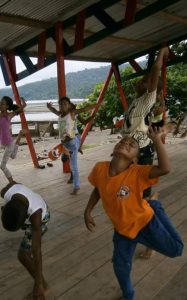
The sense of multiplicity in the Colombian constitution refers to a series of communities that have their own ways of conceiving the world and reality.
The historical process led to different types of people that had to learn to live together within our borders.
But we must start at the beginning, or at least we must try. We owe it to ourselves, our future generations and to those who have paid the way.
Now, at the moment in which the Europeans “discovered the new world” (for them it was new but on the American continent there was life before they got there) in 1492 the panorama changed in its entirety. Simply by saying that I mean new possibilities for expansion and resources.
Europeans, Indians and Slaves
As is well known to our lands, the Americans arrived with Europeans and their slaves from Africa.
The Portuguese were one of the greatest maritime powers of that time. They were the main suppliers of African slaves for the Spanish in the first phase of the colonization of America.
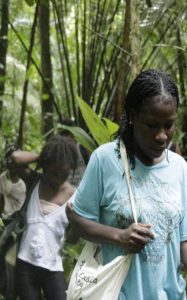
But this situation would change from the year 1533 since more work force was needed in the colonies.
Consequently, the Portuguese traded people for merchandise or used violent strategies such as the slave house or submission.
When the Spanish arrived in the American lands, they found a territory with different indigenous communities that were as different from each other as the regions of the country. During the conquest process, Native Americans were cruelly decimated.
The population of African and Eurasian (people from Europe and Asia) peoples in the Americas grew steadily but the indigenous population plummeted.
In the Native American case, diseases such as influenza, pneumonic plagues, and smallpox devastated them.
Furthermore, conflict and outright warfare with Western European newcomers reduced populations and disrupted traditional societies.
We must emphasize that at the moment in which gold mines were found (years 1590-1592) the financial situation took a total turnaround. At that time, the royal coffers were sold out.
Returning to the issue of slaves, African slaves went through Cartagena de Indias. And, they were mostly taken to gold and silver mines to be exploited and natural resource lands.

At that time, African slaves were distributed in different territories of the Viceroyalty of New Granada (which today includes the Colombian territory). The route was made from Cartagena de Indias to territories always further south.
But slaves were assigned to construction, agriculture and domestic servitude tasks.
But, well, this is information that we can find in books, if we know where to look. And, as the idea is to go beyond what is at first glance. We decided to speak with Carmenza Rojas Potes / Bambazú who is a community black feminist. These words should not scare, they are the truth and how she describes themselves proud and empowered.
L.Viera: Why should I describe you with these three words?
Carmenza Rojas: The first thing to say is that being a feminist is not the same as having a current of feminism. Black, because it is my race and essence.
L.Viera: Well, what happened when the Europeans came to America? How was that process for the negritudes, for the indigenous communities?
Carmenza Rojas: Intense.
Rojas is a powerful woman, she is impressive, she is one of the women who not only have aura, but also contagious. As she describes herself, she is an “ancestral black therapist, with that double spiral in her heart and uterus.”
A new social order
And, as expected, a “new social order” was created. A social order that was marked by the Catholic church. A social order in which he submitted to Native Americans and African slaves.

For this reason, racism and discrimination became a practice and a “normal” issue. And, we say normal since they began to see it as an attitude that is not exclusive. Thanks to this, the conquerors maintained and preserved the social scale through control and power.
However, Native Americans and African descendants did not accept this submission. From the beginning, they fought, revealed themselves and fought for their freedom.
L.Viera: How did the protest? How is this expressed in culture?
Carmenza Rojas: In the culture: all the songs, the dances and many of our words, from our current vocabulary it has many African rails. We do not know, but it is so.
By 1520, Africans were being brought in from places like Congo, Angola, Ghana, Ivory Coast, Guinea, Sierra Leone, Senegal, and Mali10 to replace the rapidly declining native population. Its population grew exponentially with the transatlantic trade or triangular trade.
Towards the middle of the last century, the majority of the black population was found on both coasts: in Chocó, Valle, Cauca and Nariño (Pacific coast) and in Bolívar, Atlántico, Córdoba, Guajira, San Andrés , Sucre (the Caribbean coast).

In the last half century, a large sector of the black population has settled in the main cities of the country. Colombia is currently the second country with the largest Afro-descendant population in Latin America after Brazil.
Slavery in Colombia officially lasted until 1851. But the abolition of almost invisible slavery in New Granada (Colombia) did not help ethnic ethnic minorities of African origin be integrated into the nation-building project.
For this to happen, more than 100 years have elapsed before the rights of ethnic minorities were legally and officially recognized. This recognition was carried out with the constitutional reform of 1991.
A matter of racial democracy
In Colombia, the myth of “racial democracy” has long reigned. The emergence of an Afro identity, and long after an Afro-Colombian identity is subject to the influence of the historical processes, conditions and factors described above.
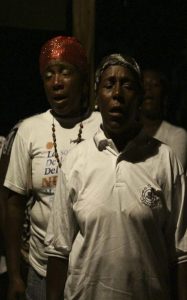
L.Viera: What is racial consciousness?
Carmenza Rojas: I wouldn’t know because I don’t believe in race. For me race is an economical construct.
Colombian Afro-descendants have had to live amid socio-political tensions, between racism and discrimination.
They have had to live with the loss of social representation until they rediscovered their cultural identity.
But, while talking to Rojas I realize something, a truth that was not clear to me before. For her, as for many other people, growing up in a society that is created for division means that she has to question and appropriate her race in a way that no one else does.
In her writing “Poetic vomit for those with liver trouble like me” assures us that: basic rights, even in 2020 continue to be a political banner year after year in a “democratic” exercise of politics dominated by parapolitics and that continues increasing both corruption and putrefaction in our lives.
A fact that is increasingly clear is that understanding social structures has not been easy.
L.Viera: Why has this understanding been hindered?
Carmenza Rojas: We have had to learn alone, to learn from a system that constantly oppresses us and thus we build a racial conscience.
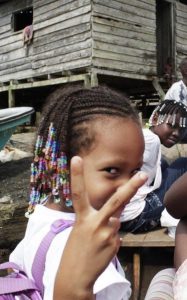
It is paramount to note that afro Colombians are descendant of black Africans. They are often referred to as blacks, brown, mulattos, niches and other popular denominations and euphemisms.
The Afro-Colombian population is made up of men and women with marked African ancestry (linguistic, ethnic and cultural).
The contribution of their expressions in national life is remarkable. Cumbia, sancocho and Macando, are only three of the many examples of their influence in Colombian and world culture.
Another fact that is extremely important is the use of the term afro. It became popular during the 90s and those who insist on its use argue the relationship that the term allows to establish with the African continent as the mother continent. many who stand by this term reject the denomination black as offensive.
An indispensable legacy
But as at the beginning of this paper, I emphasize that today new winds are felt, a new “nuance” of music of Afro-descendant origin in Colombia. Some music released from their previous discrimination as “little educated”, “little valuable”, “simple”, “easy”, all adjectives from the dominant view of a westernised world, standardised and permeated by Eurocentric processes that were generated more than 500 years ago.

Today there have been changes that start from the whole process pushed from Afro-descendant communities, achieving step-by-step validation of their cultural contexts, respect for their habitat and forms of social organization.
Afro-Colombian communities have also left an indispensable legacy in the conformation of Colombia that we know today and that goes far beyond what the popular tradition proposes: Afro-Colombianity is much more than a musical issue, a dress code and feel that differentiates from those who belong to it, but also an integral part of our history. Afro communities in Colombia are also part of our memory as a nation, that is, of the conformation of Colombia as a nation.
The recognition of diversity
Thus, although diversity is linked to regions and particular appropriations of the different Colombian territories, today, this hybrid of identities is reflected on manifestations that transcend the boundaries of the region to appear in national or even global context scenarios.
Now, excuse me, long ago we had to start giving recognition to diversity. But, it is in the now, when I can act. Therefore, I am left with a thousand more questions about what is happening with that wonderful black culture that surrounds us.

Now reading the words written by Carmenza Rojas I am left with a lot and perhaps with one of her reflections that has impacted me, “over time I have realized that daily I must not only protect my life for being black but also defend my existence for being a black woman and my dignity for being a Chocoana. ” (Poetic vomit for those with scrambled liver like me).
The recognition of diversity as one of the elements for the claim of a tradition that has been as important in the history of the country, as in the formation of a particular community: the Afro-descendant.
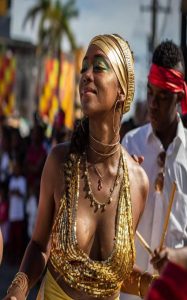
Sharing and living in community is part of our history. Maybe we should consider that our evolution does not take place while competing but while sharing.
If love is the emotion that has made the history of hominization possible, it is through love that the possibility of the social is given, since without the acceptance of the other in coexistence there is no social phenomenon. We simply can not reduce a person or community to their skin color.
This diversity of communities has been so typical of Colombian history, that it has accompanied the country since its process of conquest and colonization. We have decided that although the communities have been there forever, and have fought for a fairer world in which they are not discriminated against, seen as second-rate people, the world and our country did not belong to them. And, this is one of the biggest lies there is … above color, beyond color, they are souls with worlds to tell. For this reason, diversity should be considered as a principle that was promoted from the discoveries in the New World and the processes that arose from then on.


